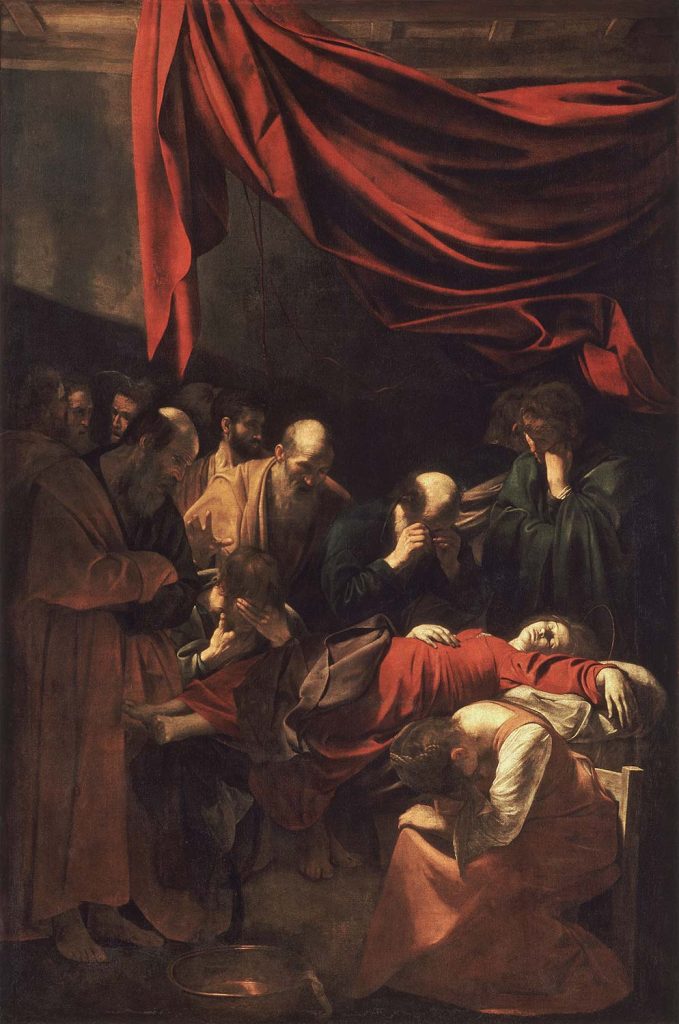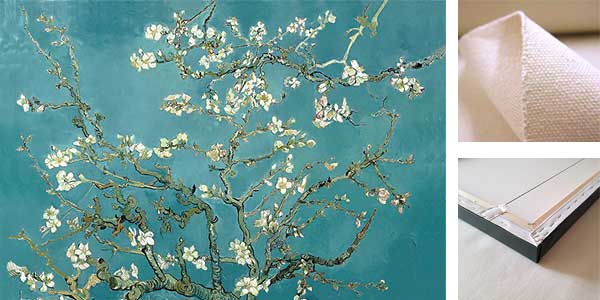
The Death of the Virgin by Caravaggio was created in 1606. The painting is in Musee du Louvre, Paris. The size of the work is 369 x 245 cm and is made as an oil on canvas.
The composition is arranged around the Virgin, the painting’s central theme. Surrounding the Virgin are overcome Mary Magdalene and apostles. Others shuffle in behind them. The compact mass of the assemblage and the posturing of the figures guide the viewer’s eye toward the abandoned body. He expresses the greater grief of the former not by a more emotive face, but by hiding their faces. Caravaggio, master of stark and dark canvases, is not interested in a mannerist exercise that captures a range of emotions.
In some ways this is a silent grief, this is no wake for wailers. The sobbing occurs in faceless emotional silence. The holiness of the Virgin is discerned by her thread-like halo. Suppressing all anecdotal detail, Caravaggio invests this subdued scene with extraordinary monumentality through the sole presence of these figures and the intensity of their emotions. The theatrical drape of blood-red cloth looms in the upper portion of the canvas; a common motif in deposition painting, here used to heighten the scene’s dramatic effect… Read more in Wikipedia
About the Artist: Italian painter Michelangelo Merisi da Caravaggio was born in Milan. During the final four years of his life he moved between Naples, Malta, and Sicily until his death. His paintings have been characterized by art critics as combining a realistic observation of the human state, both physical and emotional, with a dramatic use of lighting, which had a formative influence on Baroque painting. Caravaggio employed close physical observation with a dramatic use of chiaroscuro that came to be known as tenebrism… Read more

